Unlock the Future of Work.

Welcome to AEquacy.

Download the first chapter for free.

Giovanna D’Alessio
Partner at Asterys, TEDx Speaker, Author of “Personal Mastery. The Path to
Transformative Leadership“
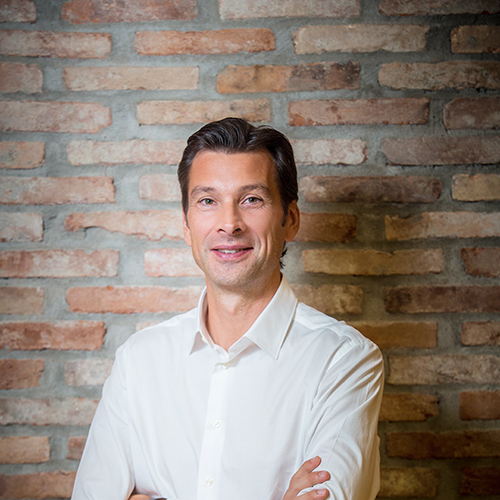
Stefano Petti
Partner at Asterys, life-long learner and co-author of several Harvard Business Review
articles.
AEquacy provides organizations
with a comprehensive self-organizing platform
New, Revolutionary Organization Design
The organizational structure of AEquacy is based on a radial network of coordinated, hierarchy-free, self-organizing teams. The elements of the structure keep the system in balance while unleashing the true potential of teams and individuals.

Framework of Operating Principles
Enabling Context, Supporting Values, Smart Systems and Individual and Team Mastery are the four areas whose elements need to be in place for a successful implementation of (or transition to) this new operating system.
Implementation
Model
We provide an Implementation Model to effectively adopt AEquacy in four steps, for both new companies or existing ones willing to move to a more efficient, fast, performing, and innovative organization.

Discover the Organizational Design of the future, a company with no bosses and no hierarchical structure.
Start here your company’s journey to increase:
Speed
Performance
Collaboration
Innovation
AEquacy – The New Human Centered Organizational Design to Thrive in a Complex World.
“An important contribution to our understanding of the structural changes necessary to promote
organizational collaboration and innovation. Highly recommended.”
Michael J. Gelb
(Author of How to Think Like Leonardo da Vinci and Innovate Like Edison)
Download the first chapter FOR FREE
Discover the Organizational Design of the future, a company with no bosses and no Hierarchical Structure.
Start here your company’s journey to increase:
Speed
Performance
Collaboration
Innovation
AEquacy – The New Human Centered Organizational Design to Thrive in a Complex World.

Download the first chapter FOR FREE
“An important contribution to our understanding of the structural changes necessary to promote
organizational collaboration and innovation. Highly recommended.”
Michael J. Gelb
(Author of How to Think Like Leonardo da Vinci and Innovate Like Edison)
The limits of hierarchy
Research shows that hierarchical structures generate and reinforce bureaucracy, silos, lack of collaboration, risk-aversion, disengagement, slow and ineffective decision-making. Change efforts fail or do not reach their full potential because they are implemented in the same outdated and limiting hierarchical paradigm.
Our insights for a new organizational design
The central idea stemming from our research findings is that only hierarchy-free, self-governing organizations are in the best condition to foster innovation, boost performance and expand people’s potential; and that a good portion of both top executives and employees are ready for the shift.


Our insights for a new organizational design
The central idea stemming from our research findings is that only hierarchy-free, self-governing organizations are in the best condition to foster innovation, boost performance and expand people’s potential; and that a good portion of both top executives and employees are ready for the shift.
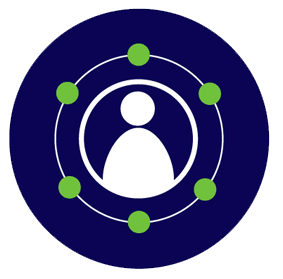
Self-organization works
Existing studies and numerous case histories highlight that self-governance improves financial performance, beneficial risk-taking, customer satisfaction, employee loyalty.

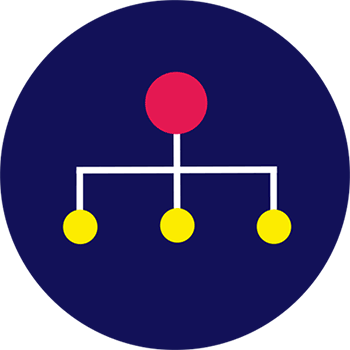

- Subordination
- Leadership
- Control
- Bureaucracy
- Silos
- Information hoarding
- Top-down strategic decision-making
- Job titles
- Performance reviews
- Cycle of yearly strategy-implementation
- Managers supervise and lead teams
- Focus on customers
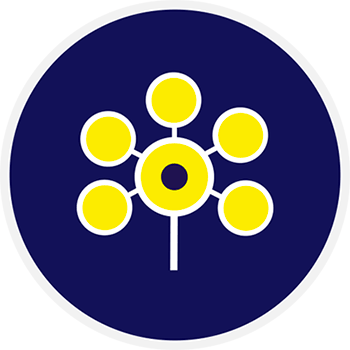

- Equality
- Partnership
- Trust
- Radically simplified systems and processes
- Inter- and intra-team Collaboration
- Transparency
- Decision-making everywhere
- Dynamic roles and responsibilities
- Peer feedback loops
- Iterative prototyping
- Teams self-organize
- Focus on all stakeholders


SUBORDINATION
Equality
CONTROL
Trust
MANAGE SUPERVISE TEAMS
Teams self-organize
BUREAUCRACY
Radically simplified processes
SILOS
Collaboration

Benefits Of AEquacy

Speed
Teams respond to market opportunities and issues rapidly, because they don’t need to wait the line of command for taking actions; Peer pressure and adherence to the organizational Purpose and Values are the compass for decision-making.
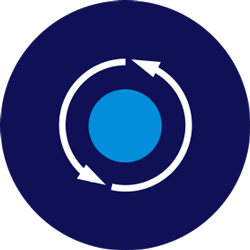
Agility
Systems are made radically simple and members of the organizations are trusted to act in the best interest of the organization.
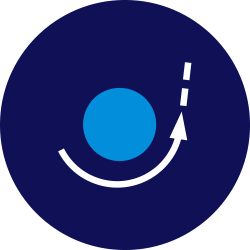
Performance
Financial and operational performance are potentially maximized through a self-balancing system that leverages the potential of each single team.

Collaboration
Teams spontaneously collaborate in the absence of department boundaries.

Innovation
When hierarchical control mechanisms are replaced by peer coordination, each person feels an invitation to be creative and find breakthrough solutions to problems.
The AEquacy Structure
Click on each element of the organizational structure
to discover all the different teams forming Aequacy
Each team has financial accountabilities and makes decisions regarding roles, objectives, strategy, metrics and own governance
The AEquacy Structure
Each team has a P&L and makes decisions regarding roles, objectives, strategy, metrics and their own governance
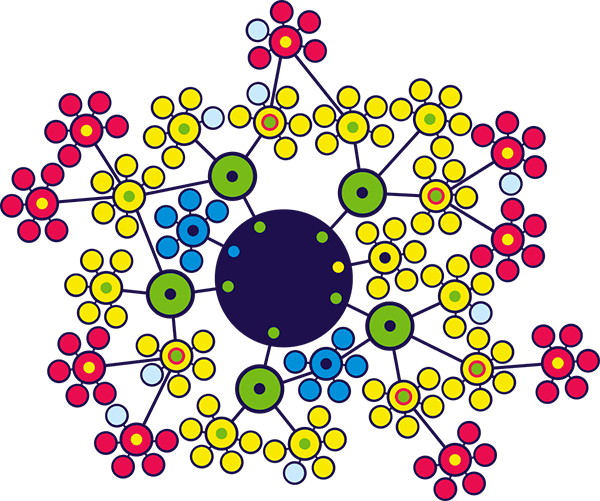

Source Team
The Source Team is formed by a number of key people and all legal representatives.
Its function is to support all teams to work effectively. It is the higher form of peer-coordination.
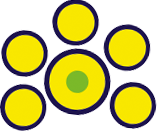
Operational Team
The scope of an Operational Team is to serve external clients, directly or indirectly.
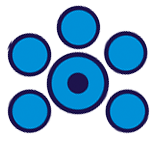
Service Team
It is created by the Source Team and/or the Coordination Teams depending on the need. It is created by the Source Team and/or the Coordination Teams depending on the need. The scope is supporting and facilitating the work of their internal clients (other teams) as needed.

Coordination Team
The scope is to maintain coherence in the projects and activities vis a vis the purpose/values of the organization and the Source Team priorities. It is formed by one representative from each team connected to it and one from the Source Team.
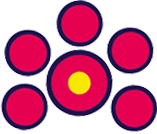
Project Team
The scope is to achieve specific, time-bounded objectives.
It is formed by any other team and it is disbanded when it reaches the expected result.



